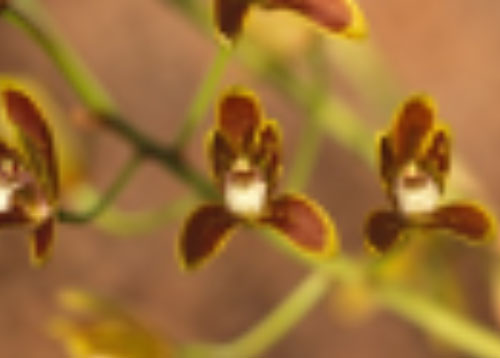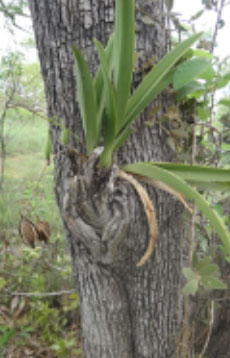<< BACK TO PROJECT LIST
Project: 333/2020
Title: Project Kimberley Cymbidium- rebuilding depleted populations of Cymbidium canaliculatum
Applicant: Professor Kingsley Dixon
Institution: School of Molecular and Life Sciences, Curtin University, Perth, WA
Project Kimberley Cymbidium – rebuilding depleted populations of Cymbidium canaliculatum in the Kimberley region of Western Australia
Tree orchids are rare in Western Australia and confined to the top end (Kimberley region) with just two species (Dendrobium dicuphum and Cymbidium canaliculatum). They are charismatic and popular for hikers, campers and locals to spot in the trees The most widespread and common species, Cymbidium canaliculatum is now becoming rare and locally extinct as the number of tourists and illegal collection have substantially increased through the region in the past 30 years.
Around the major centres of Broome and Derby the orchid is now locally extirpated and whereas once the orchid could be seen regularly in flower along major tourist routes including the Gibb River Road, the species is now rare and restricted to only inaccessible locations. Local indigenous leaders comment that this once common orchid that is important to their culture has now vanished from many places and see the loss of the plant as indicative of the loss of the health of the country.
For tourists, locals and indigenous communities, the loss of this once common tree orchid represents the loss of an emblematic plant that is a hallmark species along with the boab of the Kimberley region. Always elusive but a delight to find, the orchid is topical, well known and has high public profile. Conserving and rebuilding wild populations of the orchid therefore has very strong community support and enthusiasm.
This proposal will develop a seed collection, propagation and replanting program in consultation with local indigenous communities in the Broome and Derby regions. With support from three major station properties (covering a significant portion of the range of the species along the Gibb River Road), local care and maintenance of the replanted material will be undertaken.
A key aspect of the program will be to locate and obtain seed material for the rare apple-green variety which has been particularly hard hit by illegal collections. This incredibly beautiful species that has green tepals offset by a bright white lip is conspicuous at flowering time and hence, has been the subject of collector’s focus. By propagating this variety and making both it and the common brown/green available for community nurseries will ensure that collectors can obtain material without damaging wild populations.
What we hope to do:
- Develop a seed collection and germination capability using local community support in Broome where Curtin University has established a research nursery facility.
- Develop with indigenous youth in the horticulture certificate program at Broome TAFE (collaboration with lecturer Kim Courtenay) a training program on in vitro culture using the new non-sterile method of germinating asymbiotic epiphytic species developed by the proponent (which overcomes the need for complex laboratory facilities including costly laminar flow cabinets).
- Work with local station owners (Napier Downs, Mt House, Glenroy, Marion Downs and Charnley River Station) and indigenous communities along the Gibb River Rd who have indicated support for post-translocation of the orchid.
- Develop a community awareness raising program for the orchid, it’s cultural and tourism significance and how to help conserve the species by protecting wild populations.
- Locate and seed propagate the rare apple-green variant.


